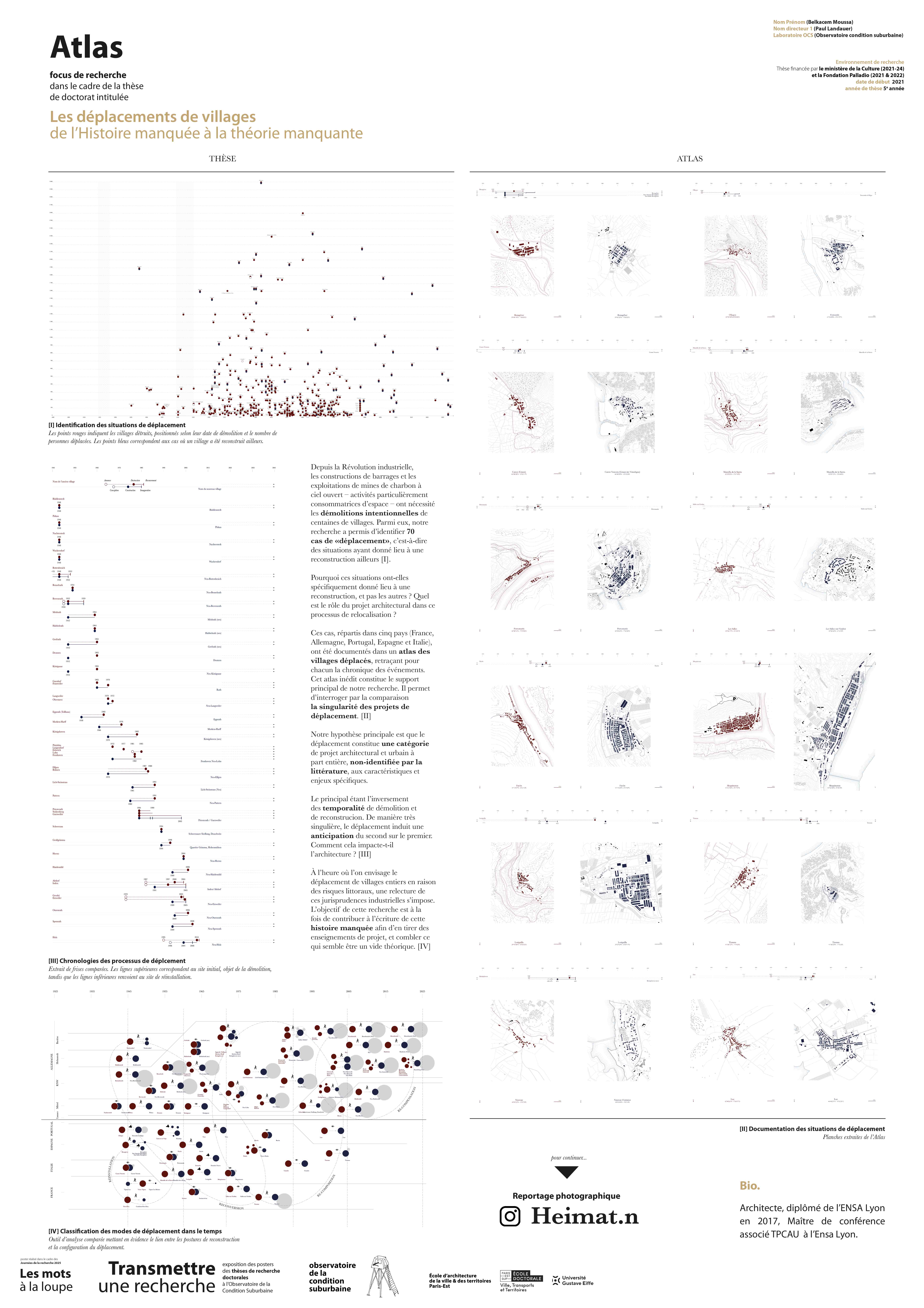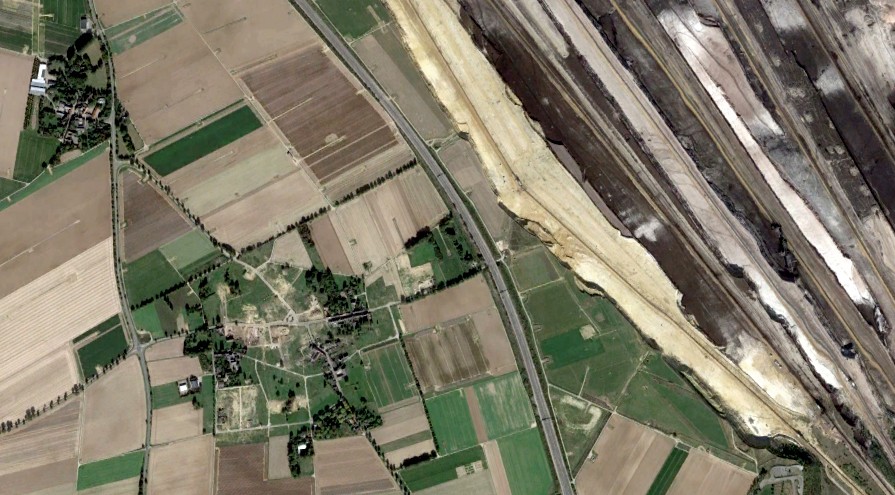Moussa Belkacem
The relocation of villages in Europe between 1945 and 2045.
What relocation options are available for places threatened with extinction?
When the Alqueva dam was built in Portugal in the early 2000s, the village of Luz, located in the future flood zone, had to be “relocated.” For decades, and for decades to come, lignite mines in Germany, iron mines in Sweden, and dams in France and Spain will lead to the displacement of dozens of villages that stand in the way of the proper exploitation of these sites. The term “displacement” has a special meaning here. In reality, the village in question is destroyed, while a new village is built elsewhere to accommodate the population. Only the community is actually displaced. From an architectural and urban planning perspective, these situations raise many questions: How should the new village be rebuilt? How can the identity of the villages be preserved during this displacement, and in particular, what place should be given to the memory of the old village? Beyond the community, what else is being displaced? Finally, how do the various actors involved in these displacements cope with the total annihilation and tragedy of the planned disappearance of what is often an ancestral territory? Although extremely costly in terms of the resources involved and the destruction caused, these operations are very numerous and are multiplying all over the world.
However, despite their abundance, they often seem to be treated as isolated, unique cases. Indeed, the state of the art shows that there are currently monographic studies on displaced villages, but no comprehensive, large-scale study seems to have been conducted on the subject. However, in light of these dozens of local situations, could we not undertake a comprehensive critical analysis of village displacement? This is the challenge of our research. One of the main objectives of this study is therefore to compile the most comprehensive European inventory possible of villages voluntarily displaced between 1945 and 2045. The examples, whether historical, ongoing or planned, will constitute a rich corpus that will serve as a basis for our research. Through field studies and comparative analyses, mainly architectural and urban, we will then draw up an inventory and examine the modalities of these relocations. This will involve a systematic critical analysis of the dual project that structures the relocation: the destruction of the old village and its reconstruction. This research will shed new light on issues that will be central to the coming decades, such as the relationship to energy, forced population displacement, risks, the total destruction of certain territories, the concepts of specificity and identity of villages, people's attachment to places, and the memory carried by architecture. Finally, this study will take an original look at the issue of territories threatened by rising sea levels. Indeed, this danger is already causing the same type of village displacement in Fiji and Alaska.
Moussa Belkacem
- Doctoral framework
◖ Dissertation supervisor
Paul Landauer (HDR)
OCS laboratory, Ensa Paris-Est
◖ PhD framework
2020-in progress
Thesis funded from 2020 to 2023 by the French Ministry of Culture
Self-funded thesis since 2023
Palladio Foundation grant
◖ Research environment
OCS Laboratory
AUSser joint research unit, Gustave Eiffel University
About research
◖ Keywords
Displacement, Villages, Extractivism, Energy policies, Scheduled demolition, Anticipated reconstruction, Architectural project, Western Europe
◖ Scientific poster

-
Illustration →
Aerial view of the villages of Immerath and Lützerath, razed to allow the advance of the Garzweiler open-cast lignite mine, 2018, Google Earth pro.
